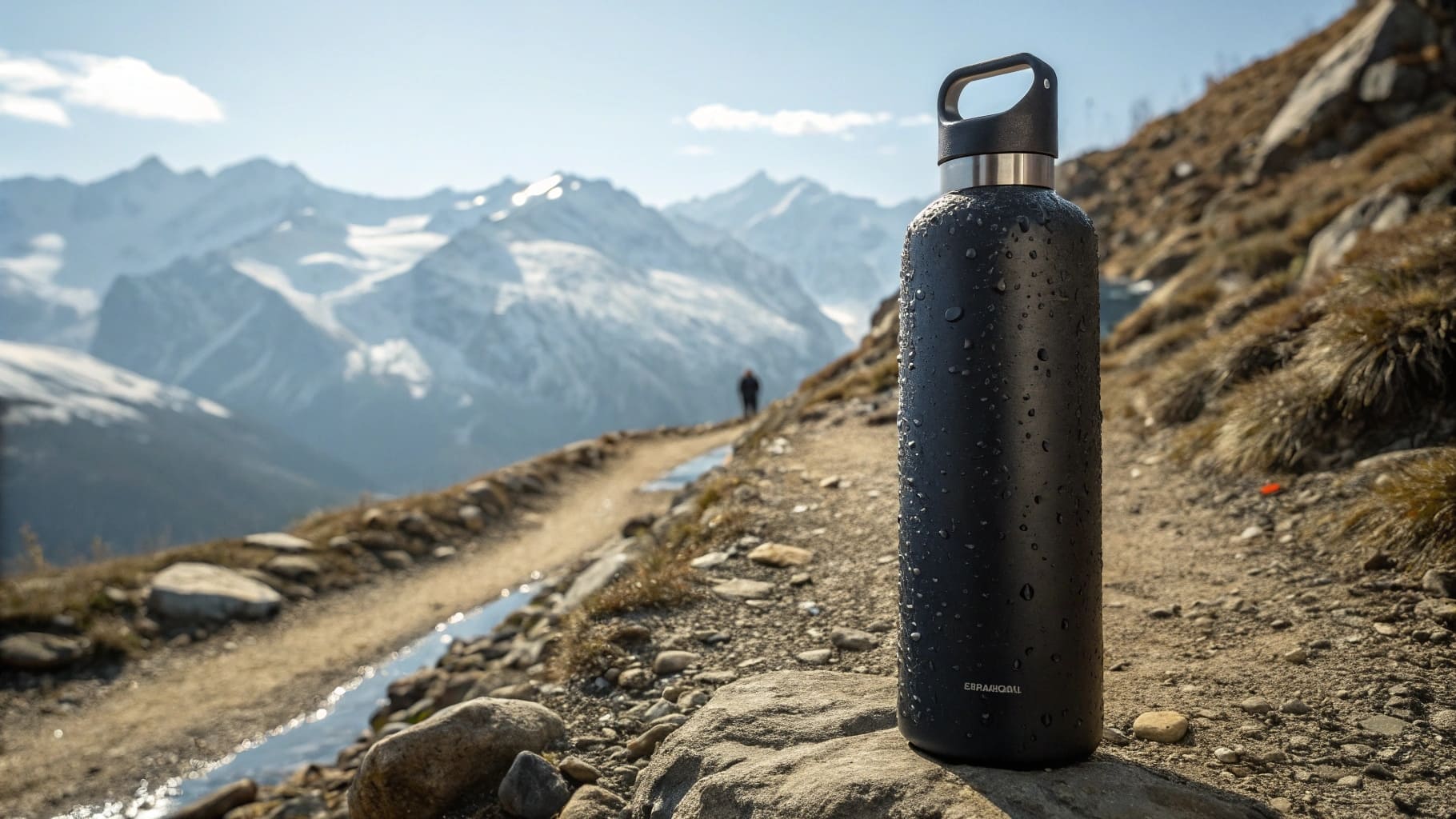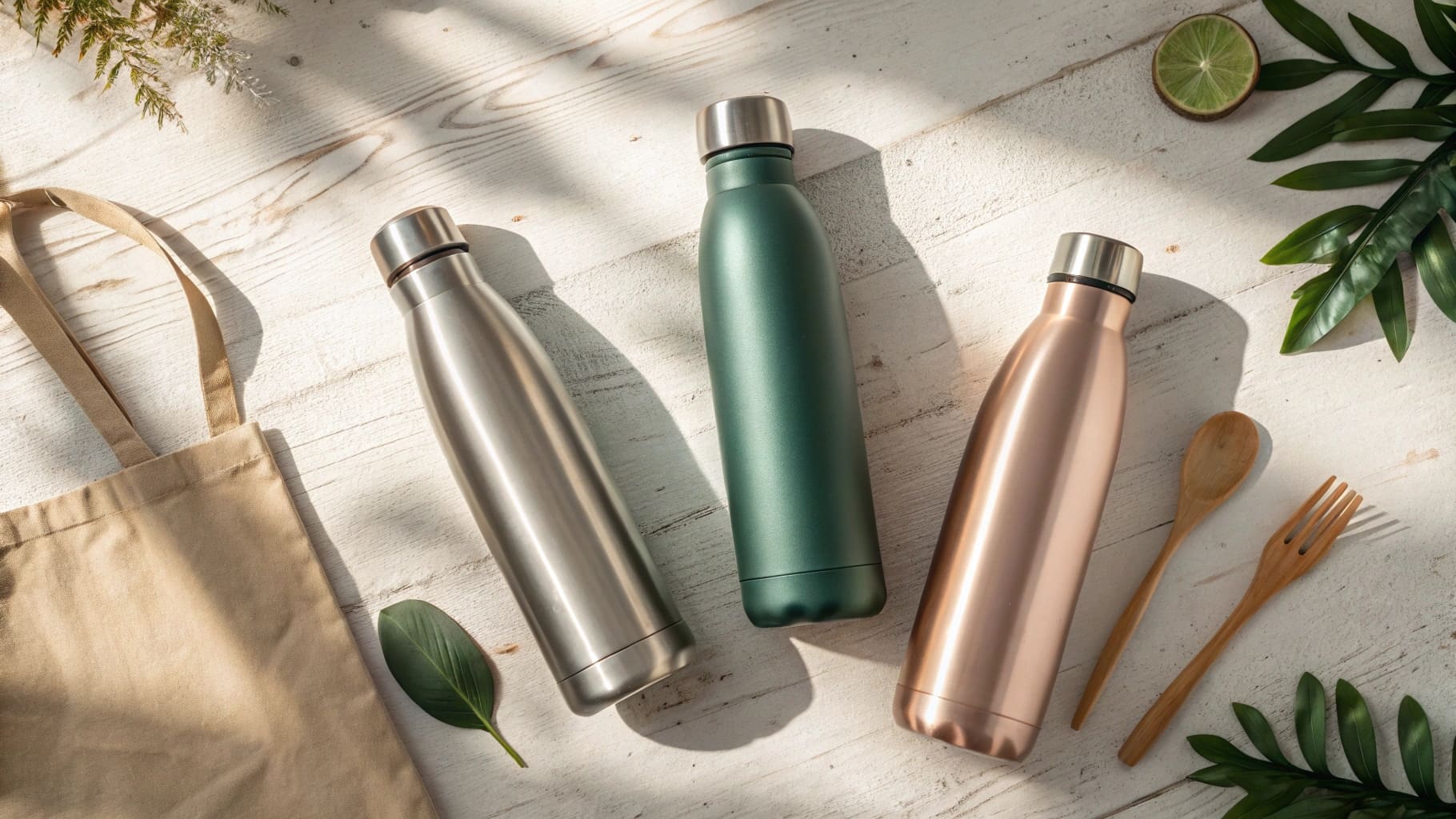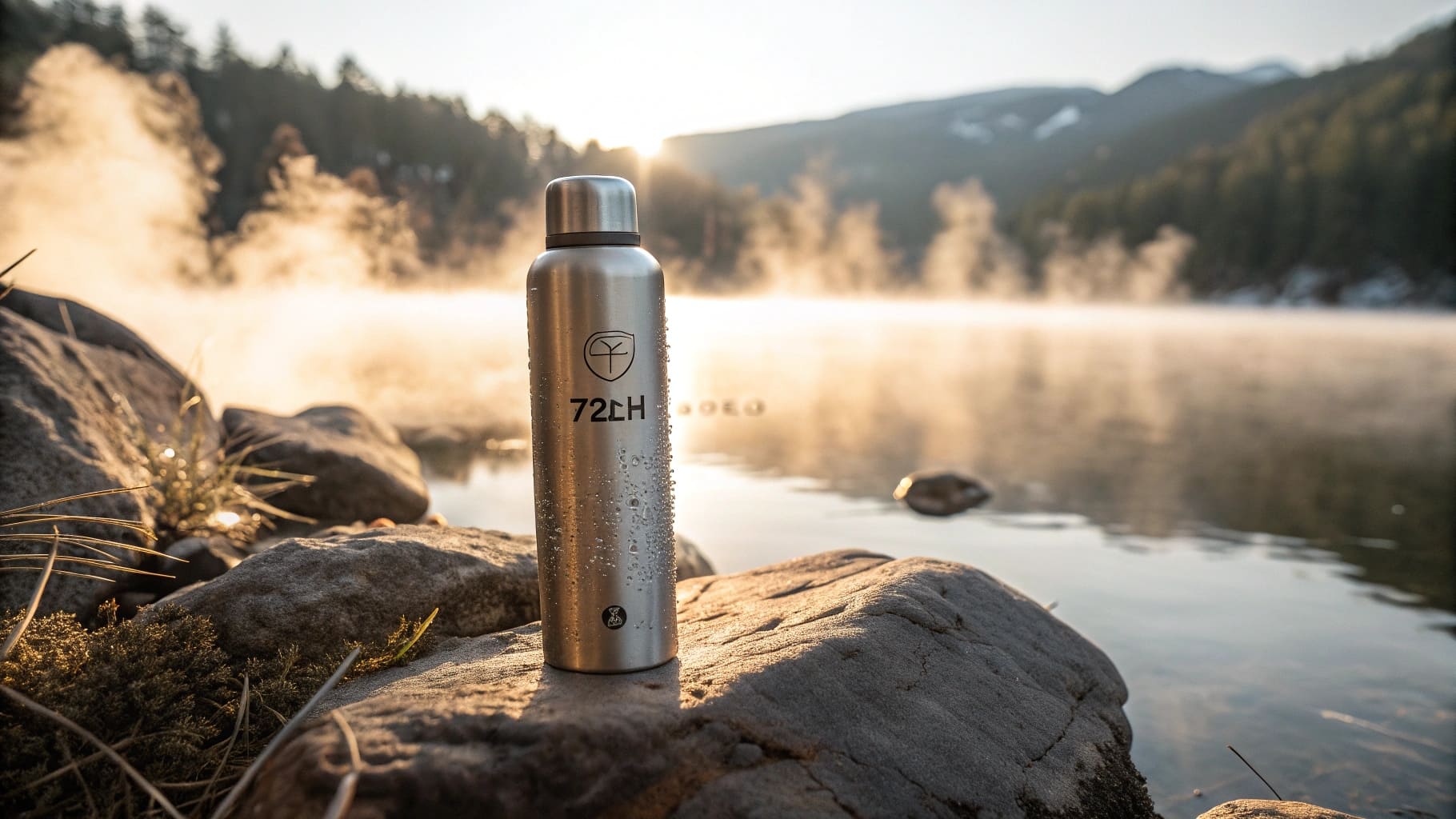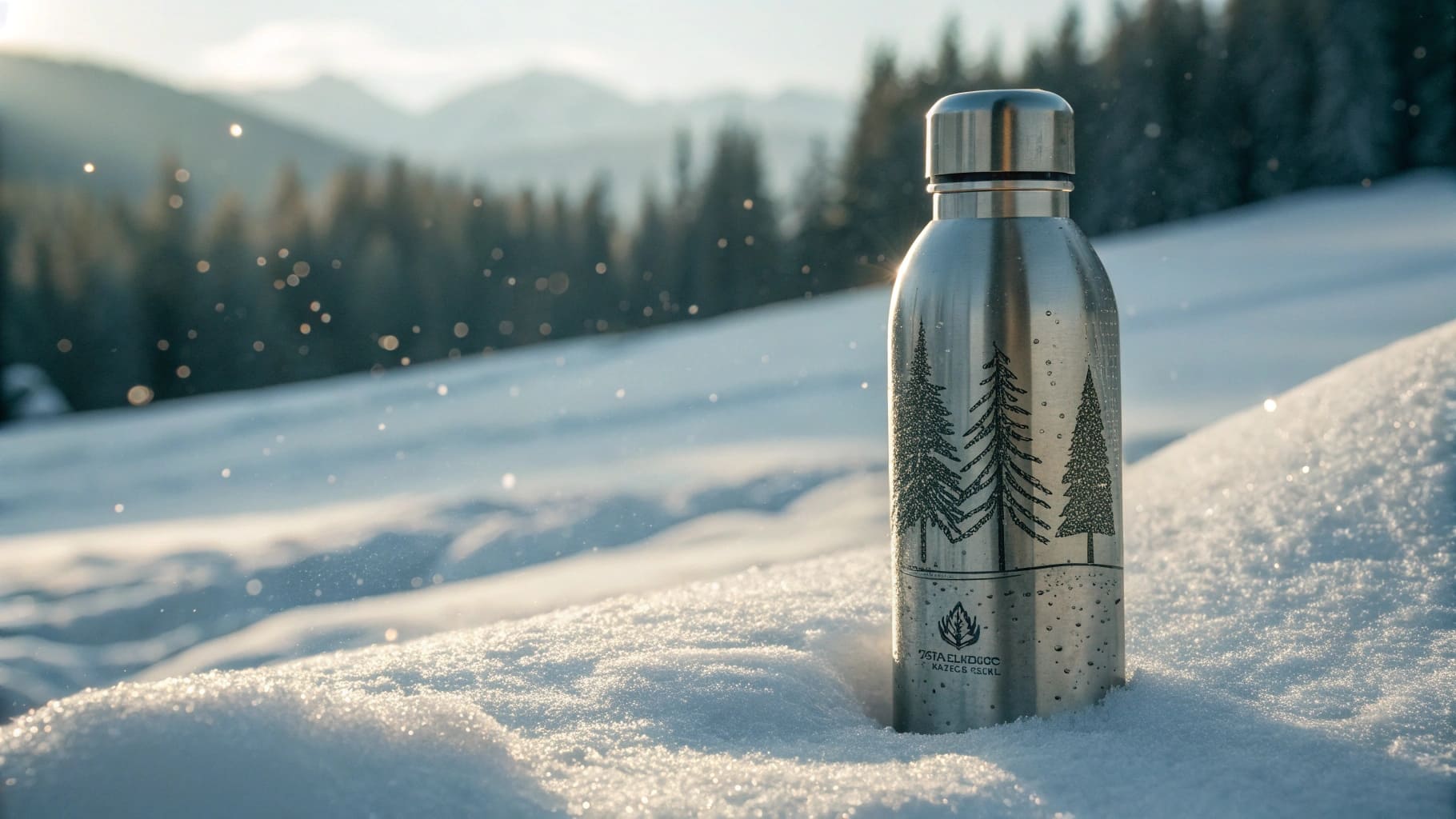Worried about choosing the right water bottles for 2025? Stocking the wrong ones means lost sales. I'll guide you through the top picks for smart B2B buyers.
For 2025, the best water bottles will blend sustainability with high performance. Think innovative stainless steel, smart designs, and eco-friendly materials that resonate with modern consumers and businesses.

As a long-time manufacturer at Icobottle, I've seen many trends come and go. Predicting the future is key for businesses like yours. This is especially true for procurement officers like Mark Shenng in Canada, who need reliable products. Let's explore what 2025 holds for water bottles. This way, you can make informed decisions for your inventory. This journey into future trends will ensure your offerings stay ahead of the curve and meet customer demands.
What water bottle will be trending in 2025?
Unsure which water bottle trends will dominate 2025? Guessing wrong costs money and reputation. I'll show you what features will be in high demand for your customers.
In 2025, trends point to sustainable materials like recycled stainless steel. Enhanced insulation for longer temperature control and smart, lightweight designs will also be popular. Customization and eco-consciousness will be key.

When I talk to clients like Mark, who purchase large quantities of stainless steel water bottles for rebranding in Canada, they always ask about what’s next. For 2025, the big trend is a smart mix of proven quality and new eco-friendly ideas. I remember a few years ago, the main focus was just on basic insulation. Now, the conversation is much broader, which is exciting.
Key Material: Stainless Steel Still Reigns
Stainless steel, especially food-grade 304, will continue to be the top choice. It’s tough. It keeps drinks hot or cold for ages. And it can be recycled. For some uses, like highly acidic drinks or very salty environments, we might see more 316 stainless steel. It costs a bit more. But it resists rust even better. We at Icobottle have always focused on top-quality stainless steel. This is because it meets the high standards our American and European clients expect. This commitment to quality helps avoid issues later on.
Innovations to Watch
But it's not just about the steel itself. Here's what to look for in 2025:
- Lighter Designs: Customers want bottles that are easy to carry but still strong. We're always researching ways to make bottles lighter without making them weak. This often involves advanced engineering in the steel drawing process.
- Better Insulation: People expect their cold drinks to stay icy. They want hot drinks to stay steaming for even longer. Improved vacuum insulation technology will be a big selling point. Think longer heat retention by an extra hour or two.
- Recycled Content: This is huge. More brands want bottles made with certified recycled stainless steel. It’s a great story for their customers. It shows they care about the planet. We're already exploring reliable sources for certified recycled materials, as traceability is key.
Here's a quick look at why these trends matter for B2B:
| Trend | Benefit for B2B Buyers | Why it Matters for 2025 |
|---|---|---|
| Lighter-weight Steel | Reduced shipping costs, enhanced user convenience. | Meets demand for portability and everyday carry. |
| Improved Insulation | Higher perceived value, better performance for end-users. | Differentiates products in a crowded market. |
| Recycled Stainless Steel | Stronger CSR story, appeals to eco-conscious consumers. | Aligns with global sustainability goals. |
| Enhanced Customization | Unique branding opportunities, higher profit margins. | Essential for brand identity and market appeal. |
These trends aren't just nice-to-haves. They're becoming essential for businesses that want to connect with modern buyers and build a responsible brand image.
What makes a water bottle best for drinking water quality?
Worried your bottles might affect water taste or safety? Poor bottle choices can ruin the purest water. I'll explain what makes a bottle truly great for H2O.
The best bottles for drinking water preserve purity and temperature. They use inert materials like stainless steel or glass. This prevents chemical leaching and keeps water fresh and enjoyable.

Many people ask "What is the best drinking water?" and often they mean the water source itself. But as someone who makes containers for water at Icobottle, I know the bottle itself plays a huge part in keeping water great. When Mark in Canada sources bottles, quality inspection is a top priority for him. This directly relates to how well the bottle preserves water quality. I once had a potential client show me a cheap bottle where the water tasted metallic after just an hour – a clear sign of poor material.
Material Matters Most
The material of your water bottle is the number one factor for water quality.
- Stainless Steel (Food-Grade 304/316): This is our main material at Icobottle, and for good reason. It's non-reactive. This means it doesn’t leach chemicals or metallic tastes into the water. This ensures the water tastes like water, pure and simple. This is something Mark appreciates, as his customers expect a premium experience. We ensure our steel passes all relevant food-grade tests, like FDA and LFGB.
- Glass: Glass is also excellent for purity. It’s completely inert. However, its fragility is a big downside for many B2B uses, especially for active lifestyle brands.
Design for Purity and Enjoyment
Beyond the basic material, other features contribute to a great drinking experience:
- No Harmful Linings: Some older or cheaper metal bottles used to have plastic linings that could degrade or leach. Quality stainless steel bottles, like those we produce, don't need these. The steel itself is the contact surface.
- Easy to Clean: A bottle that's hard to clean can become a breeding ground for bacteria. Wide mouths and simple lid designs are important for hygiene. Some innovative designs now even include detachable parts for thorough cleaning.
- Temperature Control: While not directly about purity, keeping water refreshingly cold or pleasantly warm greatly enhances the drinking experience. Good insulation, like the double-wall vacuum insulation we use, is key here. It prevents condensation too.
Here’s a comparison of how different aspects of a bottle contribute to the drinking water experience:
| Bottle Feature | Impact on Water Quality/Experience | Why It's Important for 2025 Buyers |
|---|---|---|
| Inert Material (SS, Glass) | Prevents chemical leaching, maintains pure taste. | Health consciousness, premium perception. |
| No BPA or Phthalates | Avoids potential health risks from plastic components in lids. | Safety and regulatory compliance. |
| Effective Seals | Prevents leaks and contamination from outside elements. | Practicality, hygiene, and brand trust. |
| Smooth Interior Finish | Easier to clean, less likely to harbor bacteria or retain odors. | User convenience and long-term health. |
| Good Insulation | Maintains desired water temperature for longer enjoyment. | User satisfaction, versatility for all seasons. |
For buyers like Mark, who are sensitive to quality, ensuring bottles meet these standards through proper certification and inspection is vital. It avoids problems like certificate fraud, which he's unfortunately faced with other suppliers in the past. This is why we always provide transparent documentation.
What is the future of glass bottles in the drinkware market?
Considering glass bottles for your line-up? Their classic appeal is tempting. But are they practical for most B2B needs? I'll weigh the pros and cons for 2025.
Glass bottles will retain a niche for their purity and aesthetic. This is especially true in luxury or specific home-use markets. However, for mainstream B2B, stainless steel's durability and versatility often win.

I get asked about glass bottles sometimes. They have a certain appeal, no doubt. I even have a few beautiful ones at home myself for serving water at dinner parties. But when we look at the future, especially for B2B clients like those I serve in America and Europe, we need to be practical and consider the entire lifecycle of the product.
The Allure of Glass
Glass bottles do have some strong points:
- Purity of Taste: Glass is completely inert. Water stored in glass tastes like pure water. There is no risk of metallic or plastic notes. This is a big selling point for purists.
- Aesthetic Appeal: A well-designed glass bottle can look very elegant and premium. It often conveys a sense of sophistication.
- Recyclability: Glass is highly recyclable, which is a plus for sustainability. It can be melted down and reformed many times.
However, for many of the applications my clients focus on – like promotional items, corporate gifts, or products for outdoor brands – glass has significant drawbacks that can't be ignored.
The Practical Challenges of Glass
The reality is, glass bottles aren't always the best fit for widespread B2B use:
- Fragility: This is the biggest issue. Glass breaks easily. For products that are shipped internationally, handled frequently by consumers, or used on the go, this is a major risk. It can lead to higher return rates and customer dissatisfaction.
- Weight: Glass is heavier than stainless steel for the same volume. This increases shipping costs, especially for bulk orders common in B2B.
- Poor Insulation: Glass doesn't keep drinks hot or cold for very long on its own. You might see some glass bottles with silicone sleeves for grip and minor protection, but they don't compare to vacuum-insulated stainless steel in performance.
- Customization Limits: While you can etch or print on glass, it doesn't offer the same range of color coatings, finishes, and complex logo applications that we can achieve with stainless steel at Icobottle. This limits branding potential, which is key for many businesses.
This table shows a quick comparison for common B2B uses:
| Feature | Glass Bottles | Stainless Steel Bottles (e.g., Icobottle) |
|---|---|---|
| Durability | Low (prone to breaking upon impact) | High (resistant to drops and dents) |
| Insulation | Poor (ambient temperature quickly affects content) | Excellent (with double-wall vacuum insulation) |
| Weight | Heavier (adds to shipping & carrying load) | Lighter for comparable volume |
| Customization | Limited (etching, screen printing, decals) | Extensive (powder coating, painting, laser, print) |
| Perceived Purity | Very High | High (food-grade, no leaching, no odors) |
| B2B Suitability | Niche (luxury gifts, home/office, F&B service) | Broad (promotional, retail, corporate, outdoor) |
While glass will always have its place, perhaps for high-end restaurants, specific home goods lines, or certain beauty products, stainless steel offers a much more versatile and robust solution for the majority of B2B water bottle needs in 2025. For someone like Mark, who needs to distribute rebranded bottles widely across Canada, the resilience, superior insulation, and extensive branding flexibility of stainless steel are usually far more practical and profitable.
Conclusion
For 2025, choose sustainable, high-performance stainless steel bottles. They offer the best blend of quality, customization, and eco-friendliness for your B2B success and customer satisfaction.

